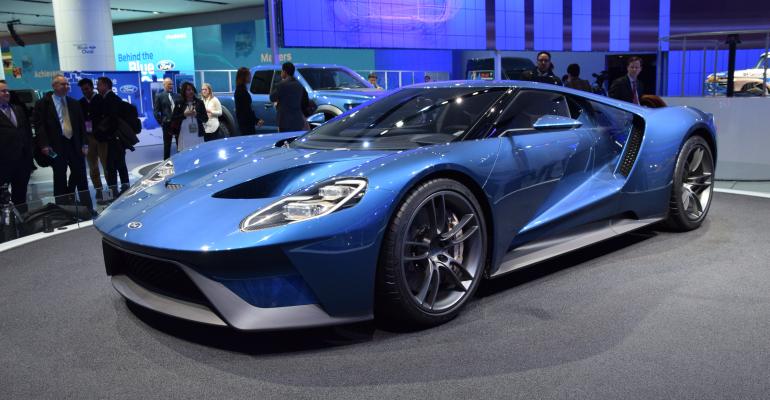OTTAWA – A joint venture between two international specialized-materials companies is looking to develop lighter, more durable automotive window glass.
Saint-Gobain Sekurit, part of the France-based Saint-Gobain Group, and U.S.-based Corning plan to develop, manufacture and sell automotive glazing products that offer “significantly improved lightness, toughness and optical quality over traditional solutions,” according to a joint statement.
Windshields on today’s cars generally are made of two pieces of glazed laminate glass of similar thickness that are fused together, but the JV will produce a lighter version by changing the thickness of the second ply, Stephane Garcia, vice president-sales, marketing and projects for Saint-Gobain Sekurit, tells WardsAuto.
“The second ply…will be made of the same glass that’s used on smartphones today,” he says. “Physically, its size is a quarter of the thickness of standard glass. Because it’s less thick, it has less mass and is lighter.”
The average windshield weighs 12.3 lbs. (5.6 kg), but the JV’s version will be 30% lighter.
The glass is Corning’s ultra-thin, chemically strengthened Gorilla Glass which, in terms of stone impact, is more resistant to damage by a factor of two, according to Doug Harshbarger, division vice president and business director-auto glass solutions at Corning. It can be used for all laminated windows in an automobile, including windshields, sunroofs and front and rear windows, he says.
The added cost of Gorilla Glass will be similar to what automakers already pay other specialty suppliers for lightweight materials, Harshbarger says. The JV’s new technology will cost between $2 and $4 for every pound that can be saved in a car, he suggests.
“A type of economics that all automakers are familiar with is, ‘How much does it cost to reduce a pound of weight in a car?’ They all have programs that calculate this,” Harshbarger says. “For example, you may have heard that last year Ford went from a steel frame to an aluminum frame in their F-150 trucks. They paid extra money for the aluminum material in order to deliver a truck with a lighter weight.
“Gorilla Glass is the same sort of thing, and the cost is similar to other weight-reduction technologies.”
Vision for Lightweighting
Harshbarger notes growing interest among automakers in reducing overall vehicle weight, especially as more stringent fuel-efficiency regulations are put in place worldwide.
“We’re providing a solution that opens up an entirely new area for automakers to design overall lighter-weight cars. We think we can save 25, 30, even up to 40 lbs. (11.3, 13.5, 18 kg) in some cases, on the vehicle by swapping out conventional glass with Gorilla Glass.”
Garcia predicts parts suppliers will introduce the new product to the market, but ultimately every automaker interested in using the material should have access to it.
Harshbarger and Garcia predict the premium and sports-car segments will be among the first adopters of their innovative glass product. These markets will appreciate not only the material’s strength and lightweight properties but also the optical quality it provides, as premium vehicles often have high-tech features such as head-up displays, where data is projected onto a surface – usually the windshield.
Harshbarger expects significant interest from the electric vehicle segment.
“These are cars where every pound of weight turns into a shorter driving range, and the driving range of electric vehicles is one of the major concerns consumers have with those types of vehicles in the first place,” he says. “So electric vehicles would be another place where this glass could be implemented early on.”
While the outline of the technology is in place, the JV itself is not.
SGS and Corning are “in the middle of the legal and administrative proceedings with the different regulatory authorities” in Europe and elsewhere over creating the manufacturing partnership, Garcia says, adding he doesn’t anticipate any major roadblocks and hopes it will be approved in the next few months.
The JV is expected to build specialized manufacturing facilities to meet demand, but details have not been released pending regulatory approval.





